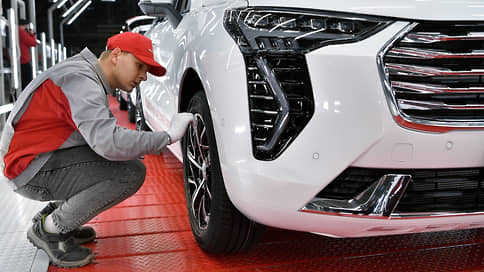Haval has increased the level of localization of its Jolion model
[ad_1]

Haval has increased its level of localization over the past year, allowing its best-selling model Jolion to remain the only model other than Lada available in the preferential car loan program. The growth in localization was achieved mainly due to Russian telematics. The main share of sales on soft loans traditionally falls on Lada. But, as analysts note, among other manufacturers, AGR has a chance of getting into the program, the perimeter of which included the former Hyundai plant along with its component reserves.
Haval was able to increase the level of localization of its best-selling Jolion model. According to the conclusion of the Ministry of Industry and Trade dated February 6, the model scores 1.63 thousand points for localization according to Resolution 719, taking into account R&D, and almost 1.5 thousand without taking into account. In the previous conclusion from December 2022, 1.3 thousand and 1.2 thousand points were indicated. Among the new operations and components, Haval began to use Russian telematics, which gave the main increase (200 points), as well as Russian wheels, tires, paints and more.
In the fall of 2023, Haval told Kommersant about plans to increase localization against the backdrop of the fact that the Ministry of Industry and Trade approved a new level for access to the preferential car loan program. From 2024, cars with an internal combustion engine must accumulate 1.6 thousand points in order to be able to purchase them through this government support instrument. Then Haval noted that they were constantly working to increase the level of localization, and predicted that “there will be no problems in achieving the required number of points.”
Jolion has been included in the preferential car loan program since September 2022 and since then remains the only foreign car available for purchase. Now, according to the price list on the Haval website, the initial model will cost 1.9 million rubles.
Cars no more expensive than 2 million rubles can participate in the preferential car loan program. As a rule, in addition to the level of localization, it was the price level that cut off other models from participation in the program. Traditionally, the main share of sales using preferential loans fell on Lada. In general, in the car market at the end of 2023, the best-selling model was the budget Lada Granta (195.9 thousand units), and the best seller among foreign cars was the Haval Jolion (55.6 thousand units), as follows from Autostat data. The budget for preferential car loans in 2024 is a record since 2020 – 17.3 billion rubles.
Sergei Udalov from Avtostat notes that now, in addition to Lada, most of the sales are made by models over 2 million rubles. At the same time, he notes, at the end of last year, against the backdrop of falling demand, some brands stimulated sales with discounts, due to which the prices of many offers dropped below 2 million rubles, but these models are not localized in the Russian Federation.
The current level of Haval localization is close to what Hyundai Solaris / Creta and Kia Rio scored before the crisis began – 1.5 thousand points, according to the conclusion of 2021.
Sergei Udalov notes that with the expansion of the list of locally produced vehicles, there is a chance that they will fall under the same conditions. “For new projects of the conditional Avtotor or other plants, it will take time to achieve such a level of localization, but if at the former KhMP plant in St. Petersburg they resume assembly from existing stocks, then if the price level is met, they can also show the required level of localization,” he says . We are talking about the former Hyundai Motor Company plant in St. Petersburg – Hyundai Motor Manufacturing Rus (HMMR), which was sold to the Russian company Art-Finance LLC of Andrei Pavlovich and became part of the AGR Automotive Group, like the former VW plant in Kaluga. Now HMMR has changed its name to “AGR Automobile Plant”. As Kommersant wrote on December 20, the plant had stocks of components from which the new owner could organize the assembly of Korean models under a new brand.
[ad_2]
Source link





